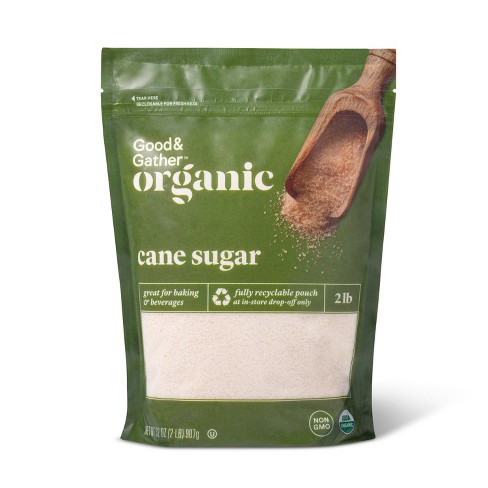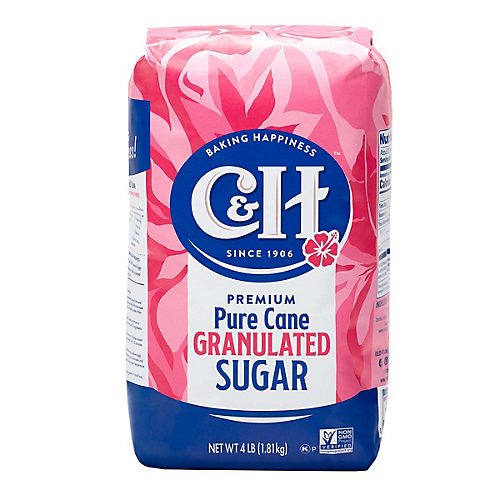Exploring the Comprehensive Tips Entailed in Walking Cane Sugar Handling From Harvesting to Refinement
The process of walking stick sugar manufacturing incorporates a series of elaborate actions, beginning with the careful harvesting of sugarcane and culminating in the refinement stages that make sure the end product satisfies industry criteria. Each stage, from the extraction of juice to the filtration and formation processes, plays a critical duty in identifying the quality and personality of the sugar. Comprehending these phases not just highlights the intricacy of sugar manufacturing yet additionally raises important concerns regarding performance, sustainability, and innovation in the industry. What implications do these elements have for future techniques?
Collecting Sugarcane
Harvesting sugarcane is an important action in the walking cane sugar processing chain, as it straight affects the quality and return of the end product. Appropriate timing and techniques are essential during this phase to make certain optimal sugar web content and lessen losses. Typically, sugarcane is gathered when it reaches maturation, usually 12 to 18 months after growing, identified by a high sucrose concentration.

Post-harvest, the sugarcane has to be processed quickly to protect against sucrose deterioration. Preferably, harvested walking stick needs to be delivered to refining facilities within 24-hour to protect sugar high quality. Consequently, reliable logistical preparation is vital to preserve the integrity of the harvested crop throughout the supply chain.
Extraction Process

The smashed walking cane goes through a series of pressing operations to optimize juice recovery. Typically, warm water is sprayed onto the smashed walking stick, creating a countercurrent flow that aids liquify the sugar while also assisting in the removal process. The juice gathered from this operation includes not only sugar however also numerous natural substances and impurities.

To boost extraction efficiency, some centers may use diffusion methods, where the sugarcane is soaked in warm water, allowing the soluble sugars to diffuse right into the fluid. The resulting juice, rich in sucrose, is after that guided to subsequent processing phases, laying the structure for filtration and improvement. The extraction process is therefore essential in identifying the high quality and return of the last sugar item.
Purification Techniques
The filtration methods used in cane sugar processing are vital for changing the raw juice into a top notch sugar item. These methods primarily intend to remove contaminations, such as soil, plant materials, and inorganic materials, which can negatively impact the end product's taste and shade.
Among the most usual filtration methods is explanation. This procedure includes adding lime and warmth to the raw juice, which promotes the coagulation of contaminations. The resulting precipitate is after that eliminated via sedimentation or filtering, yielding a clearer juice. Furthermore, using phosphoric acid can boost the explanation process by additional binding contaminations.
One more substantial strategy is carbonatation, where carbon dioxide is introduced to the cleared up juice. This reaction creates calcium carbonate, which captures remaining contaminations and advertises their elimination.
Furthermore, triggered carbon therapy might be used to adsorb any type of remaining colorants and natural impurities, making sure a much more refined product. The combination of these methods properly prepares the sugar juice for subsequent actions in the refining procedure, establishing the phase for the production of high-grade walking stick sugar.
Formation Approaches
After the purification stage, the next vital action in walking cane sugar handling involves crystallization approaches, which play an essential duty in changing the cleared up juice right into strong sugar. This process generally employs two key methods: spontaneous crystallization and controlled formation.
In spontaneous condensation, supersaturated sugar solutions are permitted to cool down normally, bring about the development of sugar crystals with time. This approach is simpler yet may cause irregular crystal sizes and lower pureness levels. On the other hand, controlled crystallization is a more accurate strategy where concentration, temperature level, and seeding representatives are carefully managed. This approach permits the uniform development of sugar crystals and higher purity.
Throughout condensation, the cleared up juice is focused with evaporation, boosting its sugar material up until it reaches supersaturation. As soon as this point is accomplished, either approach can promote the formation process. Cane Sugar Processing. The important link resultant sugar crystals are after that divided from the staying syrup with centrifugation
Inevitably, the selection of condensation method affects the quality, dimension, and purity of the final sugar item, making this step crucial in the total cane sugar handling procedure.
Improvement and Packaging
Exactly how can the purity and high quality of cane sugar be further boosted after crystallization? The refinement procedure plays an essential duty in accomplishing high-grade walking cane sugar. Adhering to formation, sugar undergoes a comprehensive washing to remove pollutants and residual molasses. This is usually accomplished using warm water or steam, which helps dissolve and extract unwanted aspects while preserving the sugar crystals.
Following, the sugar is subjected to a procedure called centrifugation, where it is rotated at broadband to divide the cleansed sugar crystals from the staying liquid. After centrifugation, the sugar is typically more improved via a technique called carbonization or phosphatation, which makes use of turned on carbon or phosphoric acid to eliminate color and off-flavors.
Once improved, the sugar is dried out to attain the wanted dampness web content, ensuring that it remains stable throughout storage space and transport. The last action entails product packaging the polished sugar in closed and moisture-proof containers to maintain its top quality and prevent contamination. Cane Sugar Processing. Proper product packaging not only prolongs life span however also facilitates very easy handling and distribution, ensuring that customers receive sugar that fulfills site web the greatest standards of pureness and high quality
Final Thought
The thorough actions involved in cane sugar handling, from the precise harvesting of sugarcane to the elaborate refinement and packaging stages, underscore the value of each stage in guaranteeing high-grade sugar manufacturing. Optimum harvesting methods, reliable extraction approaches, and strenuous filtration procedures jointly add to the end product's purity and stability. The formation and subsequent product packaging methods additionally enhance the honesty and shelf life of the sugar, highlighting the intricacy and accuracy intrinsic in this necessary farming market.
The process of walking stick sugar manufacturing incorporates a series of complex steps, starting with the careful harvesting of sugarcane and culminating in the improvement stages that make certain the last product meets industry standards. Preferably, gathered walking cane must be delivered to processing facilities within 24 hours to maintain sugar top quality.In spontaneous crystallization, supersaturated sugar options are go to this website allowed to cool down naturally, leading to the development of sugar crystals over time - Cane Sugar Processing. The improvement procedure plays a crucial function in achieving top notch walking cane sugar.The thorough actions included in cane sugar handling, from the careful harvesting of sugarcane to the detailed refinement and packaging phases, underscore the importance of each phase in guaranteeing high-quality sugar production